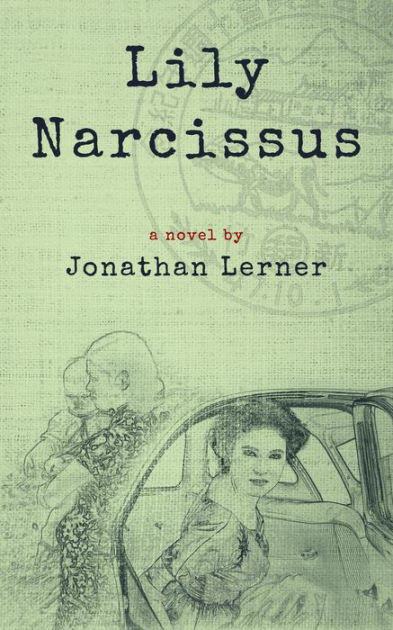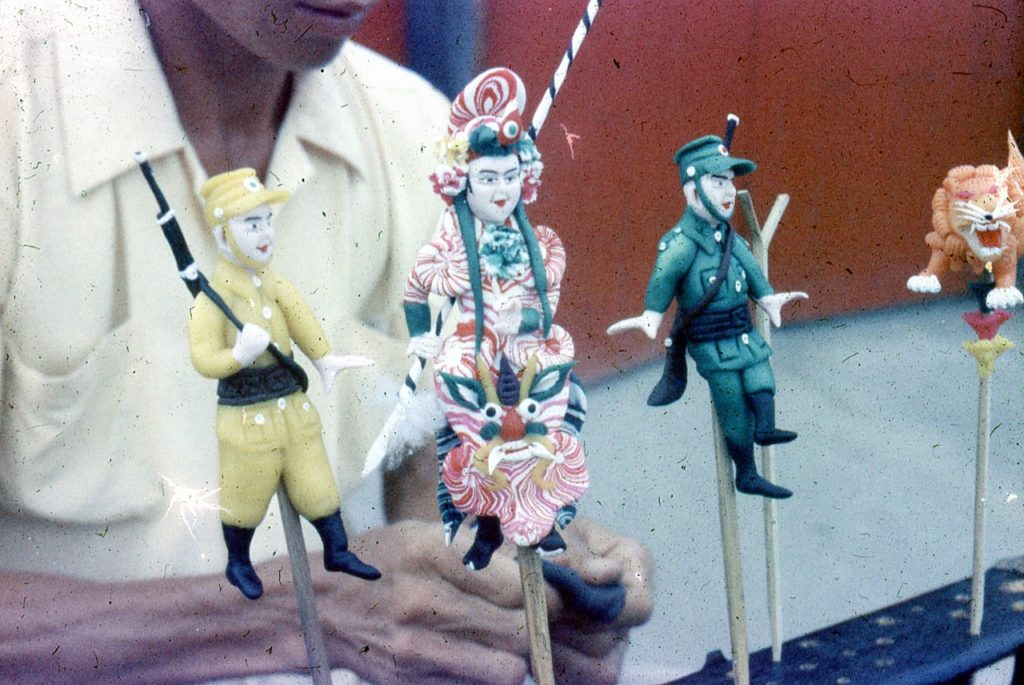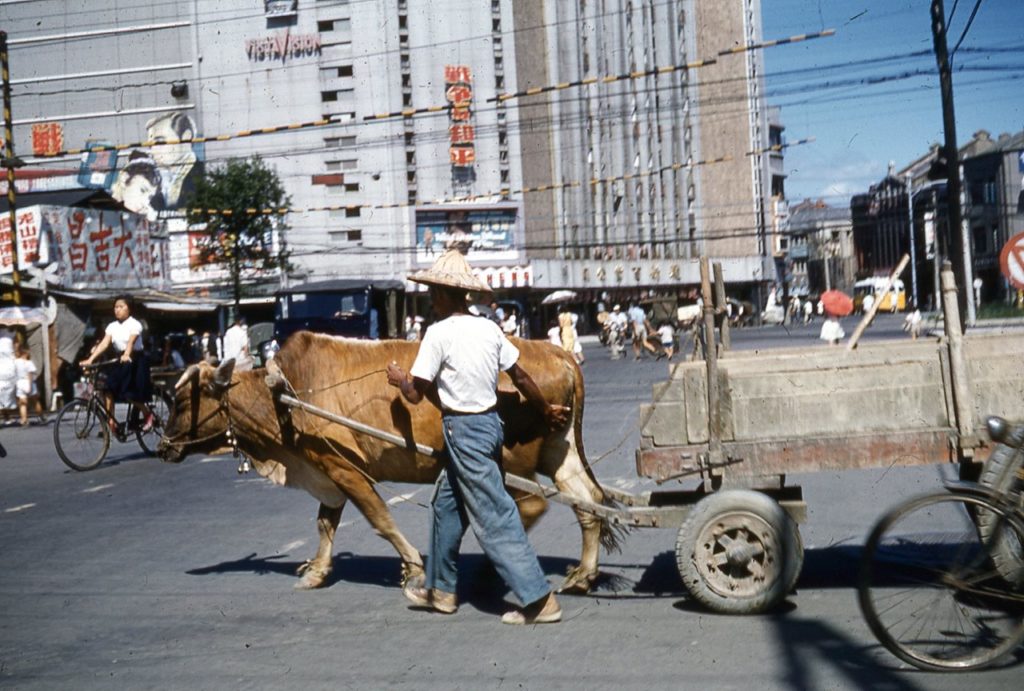SPOILER ALERT: Plot details of the novel Lily Narcissus are discussed in this interview.
Jonathan Lerner lived in Taipei for two years in the late 1950s when his father, a foreign service officer, was stationed there. Later he was involved with the leftist Students for a Democratic Society, and then a violent breakaway group, the Weatherman, a.k.a. the Weather Underground. He has written a memoir about his time as a radical leftist, Swords in the Hands of Children: Reflections of an American Revolutionary. He has also written two novels in addition to Lily Narcissus—Caught in a Still Place and Alex Underground.

His third novel, Lily Narcissus, explores the lives of an American Jewish family living in Asia, a family whose members don’t seem to know as much about each other as they think. Lauren, their surviving member and the daughter of the narcissistic Lily of the title, tries to put together their family’s story after receiving an album of old and yellowed letters her mother had written to friends back home during the family’s first tour of duty in Taipei. Lauren’s journey through family history takes her only so far, however; as she concludes, “a lot of questions can have several different answers.”
I talked to Jonathan Lerner about the novel and about both Lauren’s journey in the novel and Lerner’s journey through the novel, from early drafts to the final published version. He had a collection of his mother’s letters from Taipei, which inspired the epistolary portions of the novel (his mother, he quickly adds, was not like Lily otherwise). He observed that originally he had planned to make the whole book about Lily: “When I first conceived the book, I really thought it was all going to be all about Lily. … When I very first started working on it, it didn’t occur to me that the Vietnam War was going to be a factor. I just thought, a woman goes to the foreign service and her life changes and she grew in certain ways, she does positive things and negative. I just thought it was like a story about Lily told by her daughter, but it became more than that.”
Lauren became the narrator, according to Lerner, because as a 15- to 16-year-old (at the beginning), she was “adult enough to understand that there’s stuff going on that she doesn’t get.” In addition, “I think maybe subconsciously I also felt that as a woman, she would have a better ability to perceive and tell what was happening with her mother.”
When Lauren narrates, she is in her late 70s, retired and living alone in a high-rise apartment in Honolulu. Her observations are sometimes bitter and cynical, perhaps born of weariness. Lerner noted that someone he talked to had found Lauren to be sad, “and when I think about it, she actually, she’s very armored, she’s very isolated. She didn’t get much love in her life. So that surprised me that somebody said it. And of course, it’s true.”
Another surprising observation from a reader that Lerner found himself agreeing with was the comment that Lily Narcissus “is a novel in two voices.” Although he generally had thought of it as a novel in Lauren’s voice, “really there’s Lily writing in 1957, 1958, and there’s Lauren today reading that and commenting on it from her memories there, but then also commenting on the family’s whole story from the present—stuff that came way after the letters. So all the stuff about Jordy’s tragic path, … Lauren is reconstructing today from her memories over a period of decades.”
For Lerner, the story “sort of happens in an unconscious way,” although he kept notes that he threw away after using. He also realized “pretty early on” that he had to keep a timeline of his characters’ lives and activities, which he did in a Word document. But overall, he says, “I only found out what was going to happen to these characters as I unfurled the story.”
One example of the characters leading the story is what Lerner called “Jordy’s tragic path.” Jordy, or Jordan, Lauren’s younger brother goes through a difficult childhood. In Taipei, he associates with “military boys … a lot of Elvis Presley haircuts, if you know what I mean,” writes Lily. When Lily and Sid (Lauren’s father) send Lauren and Jordy to a private British boarding school in Hong Kong, Jordy is bullied (and, it is implied, raped) by the other boys. His love of airplanes and growing hatred of Communism leads him, as an adult, to become a helicopter pilot for Air America after he was inducted into the service during the Vietnam War. After napalming villages, carrying loads of dead Hmong guerilla fighers back to their village, watching his helicopter get pushed off a Navy ship after delivering rescuees from the embassy rooftop, and all the while self-medicating with alcohol and drugs, Jordy dies by suicide. While this, suggested Lerner, is “pretty obvious, like what’s the next thing for this guy to do: kill himself,” it was not something Lerner planned or knew would happen when he started the book.
The presence of Air America in the novel also points to another important part of the process that we discussed: research. As Lerner put it, “Once I understood that Air America was going to become a piece of the story, then I realized, well, I need to know some stuff about it.” Using a book of oral histories and the personal blog of the child of an Air America pilot, he was able to use the visual detail and narratives to describe Jordy’s experiences.
Other research included studying images and maps of locations like Macau, Bangkok, and Saigon. He relied on his career as a travel writer and a writer of magazine features that focus on urban development and historic preservation to use images and maps to “extrapolate to get a sense of what an urban space is like.” For Taipei in particular, he was also aided by his “vivid memories” and the hundreds of 35mm slides that his father had taken.
Photos taken in Taipei by Abe Lerner (Jonathan‘s father) 1957-59.
Lerner observed that the research process for the novel was “not any different from the process of writing nonfiction. … The magazine work I’ve done in writing a travel article, you’re always wrapping your mind around a lot more information about a place than you’re going to use. And so you’re always looking for …, what are the telling details? What are the sort of things you can use to very economically evoke a feeling or a description or of a place? So in that way … the process is very similar to me.”
Lerner mentioned Joan Didion’s 1984 novel, Democracy, as an influence for his novel; although he hadn’t read it recently and wasn’t trying to emulate it, “I still think that atmosphere of that foggy character becoming clearer and receding into the fog … lent uncertainty … I found so … seductive.” While some readers might find that uncertainty in a novel frustrating to deal with, Lerner felt that “it makes it sort of more intriguing like that. … Like, I’m the reader. I read this story. Well, maybe I’ll make up a final chapter myself about what really happened.”
The “foggy character” of the Lily Narcissus also reflects Lauren’s own attempts to uncover her family’s history. “She’s trying to uncover things even though mostly she can’t, or she can only uncover them to a certain point; she can never really know some of these things. What really went on between Lily and Rocky,” the debonair operative who worked with Lauren’s father? Or why did Lily turn her back on her friends from home after writing those vivid letters to them for a year, the letters that now, “yellowed and brittle around the edges,” were the impetus for Lauren’s journey of discovery?
Says Lerner, “I guess I was trying to aim for that [atmosphere] because it seemed so appropriate to a Cold War diplomatic, expatriate kind of world where so much was going on that you couldn’t put your finger on. It’s probably still true today, really.”
(Interview by Jonathan Benda, who blogs at 外 not. Edited for style and clarity)
Lily Narcissus is published by Unsolicited Press. It was reviewed on Bookish Asia by John Ross.





